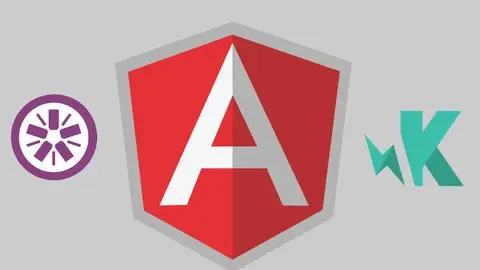Unit Testing Angular Apps
Published 5/2023
MP4 | Video: h264, 1280x720 | Audio: AAC, 44.1 KHz
Language: English | Size: 1.92 GB | Duration: 3h 6m
Published 5/2023
MP4 | Video: h264, 1280x720 | Audio: AAC, 44.1 KHz
Language: English | Size: 1.92 GB | Duration: 3h 6m
Using Jasmine and Karma
What you'll learn
Understand the importance of unit tests for an application
Understand jasmine test framework and customization options
Learn about the out of the box testing features that are provided by angular framework
Learn and write unit test cases for the most day to day scenarios for UI developers
Requirements
This course is intended for beginner to moderate level angular developers. Basic HTML, Javascript and angular knowledge will be helpful but not required. The only tools needed are a modern web browser and an IDE
Description
Unit testing is the process of testing small and isolated pieces of code and it is a very powerful tool you have for preventing bugs within your application. This ensures that the application is stable, works exactly as expected and also provides an added advantage to the users to add any new features without breaking any other part of their application.The primary focus for this course is to learn unit testing in Angular using Jasmine framework and Karma runner. I will explain the fundamentals of angular testing from Scratch. Instead of learning the theoretical concepts, we will try to take a real world approach by writing test cases for scenarios that you may encounter on a day to day basis. By the end of the course, you will learn how to Write and run tests in Angular using Jasmine & Karma.Write tests for typescript classes & components.Prepare the Angular Test Bed for creating the specs.Test components and services using mocks and spies.Write tests that involve an asynchronous operation.Write tests that require the dependency injections.Write tests that involve making Http calls.Write tests that involve template-driven and reactive angular formsWrite tests to test the angular router.
Overview
Section 1: Introduction
Lecture 1 Introduction
Lecture 2 Course Prerequisites
Section 2: App creation and basic tests
Lecture 3 New app creation and structure
Lecture 4 new component creation
Lecture 5 First test
Section 3: Component and HTML template testing
Lecture 6 Default HTML test
Lecture 7 HTML template test
Lecture 8 HTML Two way binding test
Section 4: Testing Services
Lecture 9 Creating a test service
Lecture 10 Introduction to Spy
Lecture 11 Spy with args
Lecture 12 Spy With Object
Section 5: Testing HTTP
Lecture 13 Introduction to HTTP Testing
Lecture 14 HTTP Testing explained with example
Lecture 15 Testing HTTP request headers
Lecture 16 Testing HTTP Response headers
Lecture 17 Testing HTTP Errors
Section 6: Dependency Injection
Lecture 18 Testing Dependency Injection
Section 7: Testing Forms
Lecture 19 Creating a new form
Lecture 20 Introduction to template driven forms and basic validations
Lecture 21 Template driven forms tests
Lecture 22 Template driven forms - Additional validations
Lecture 23 Template driven forms - Tests for additional validations
Lecture 24 Introduction to reactive forms
Lecture 25 Basic form control validations and tests
Lecture 26 Form level validations and tests
Section 8: Testing Routing And Navigation
Lecture 27 Introduction to Routing
Angular developers looking to learn how to create unit tests.



